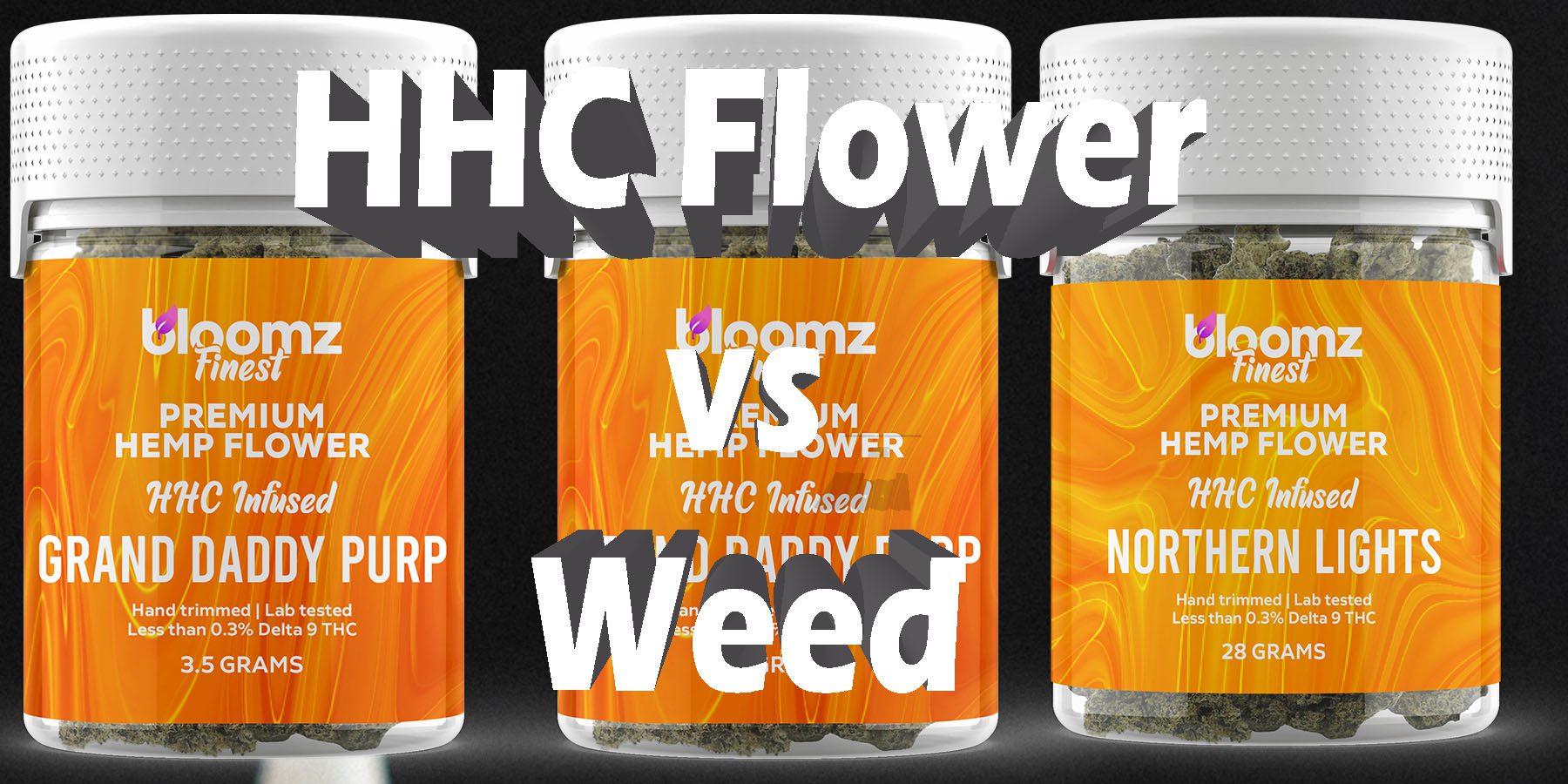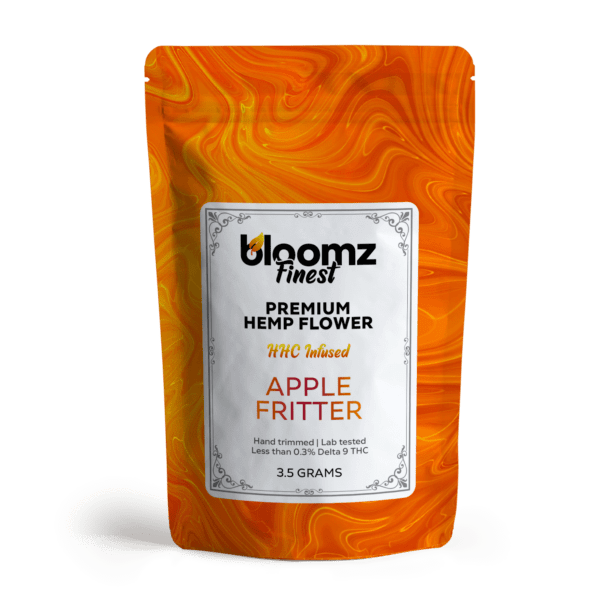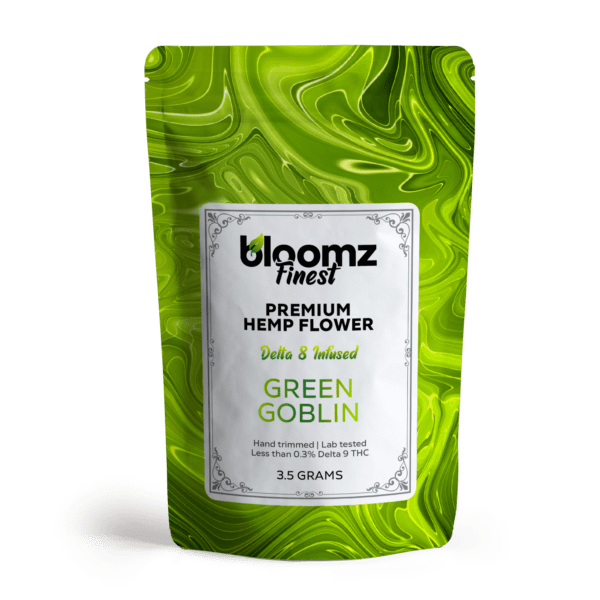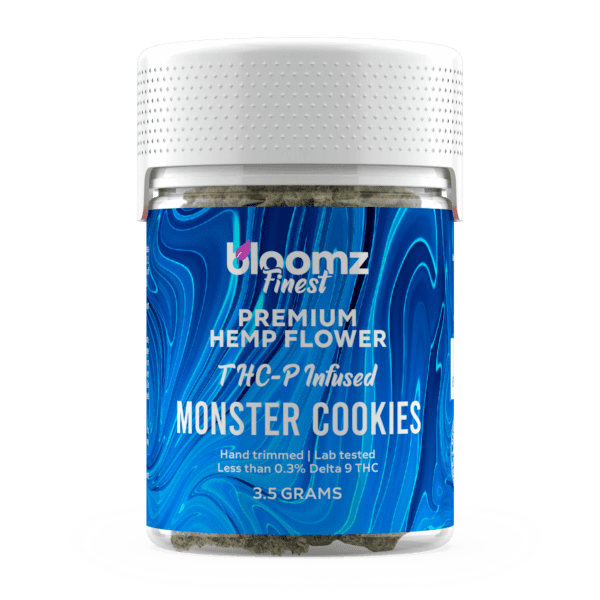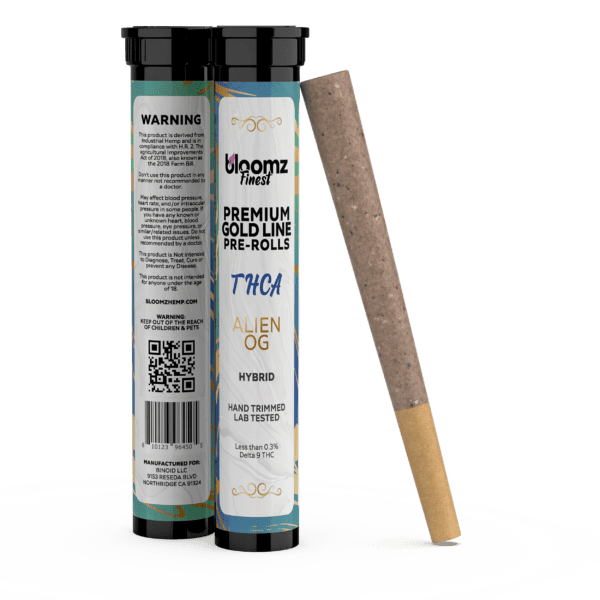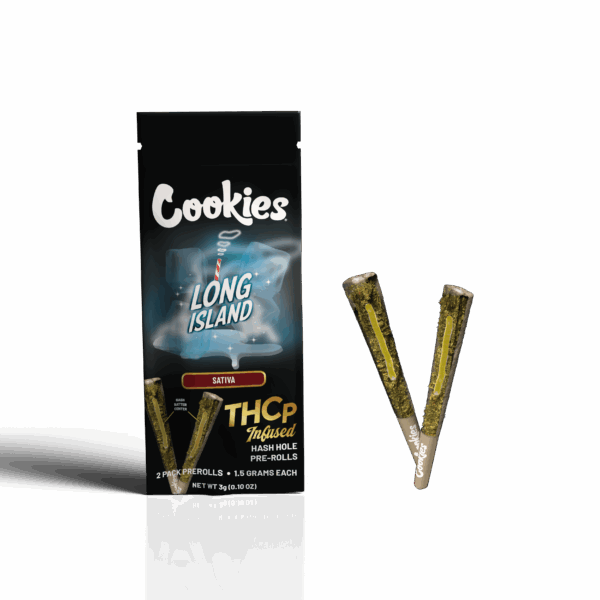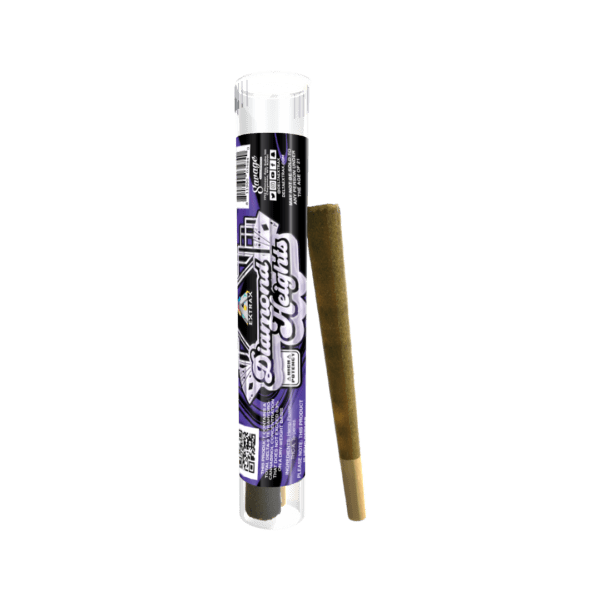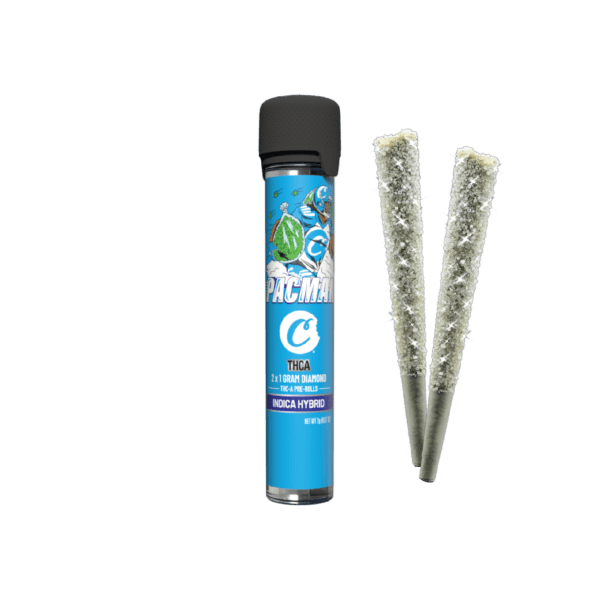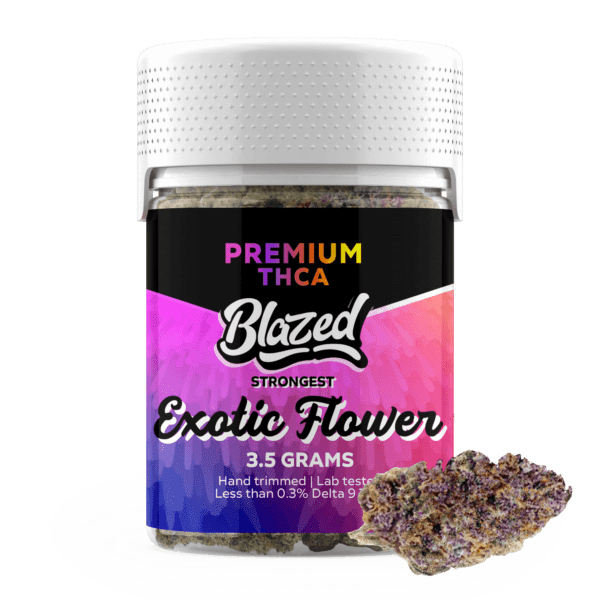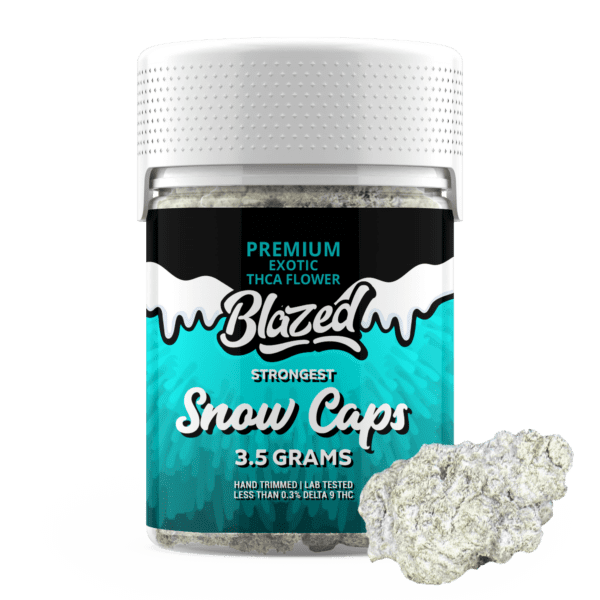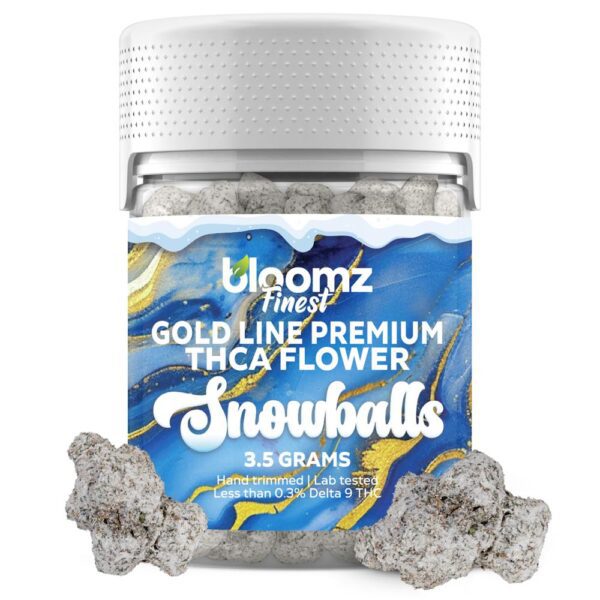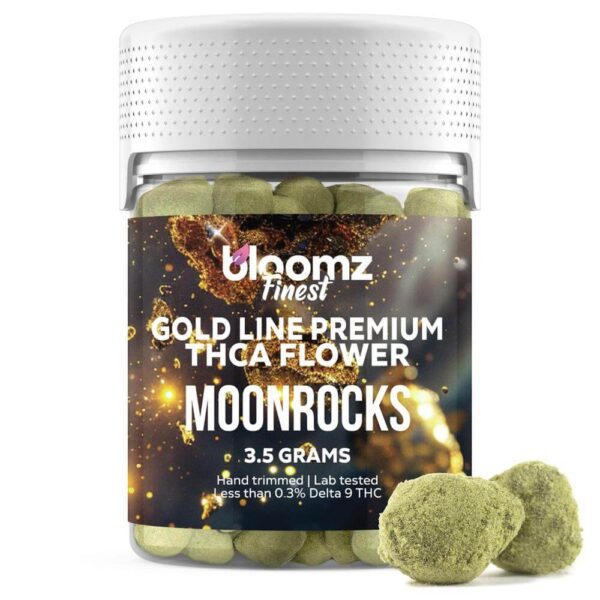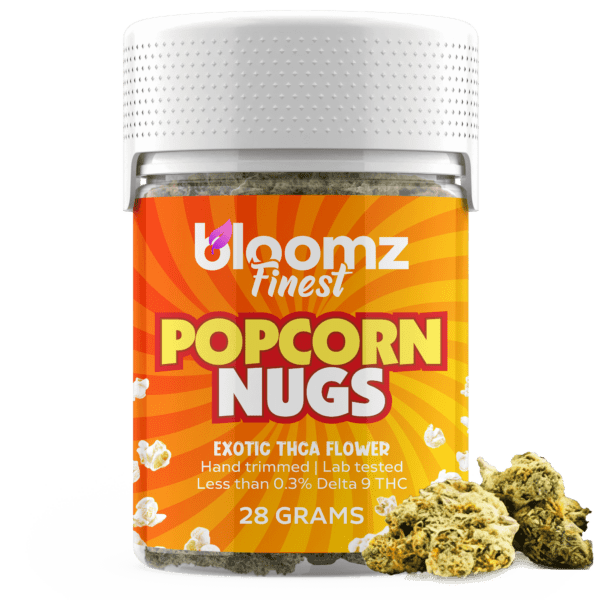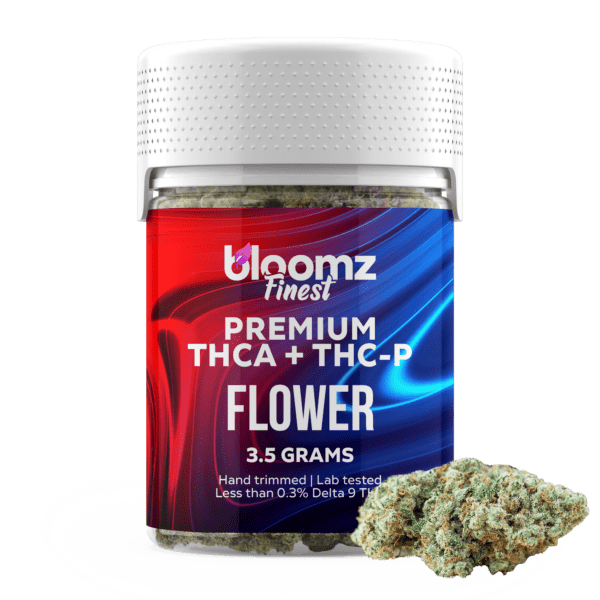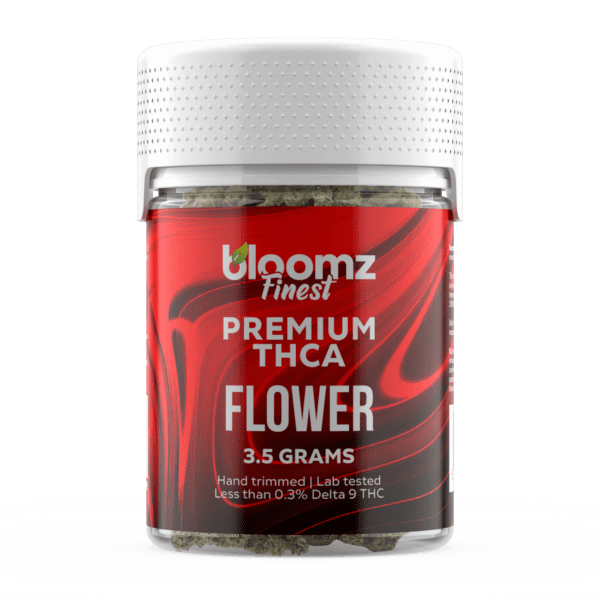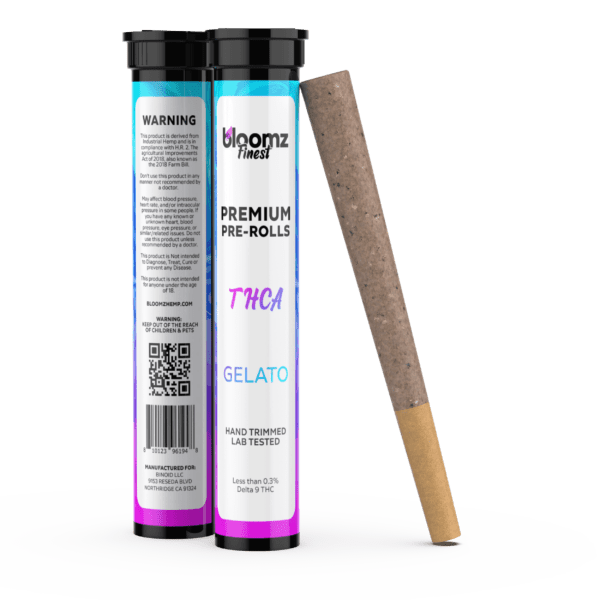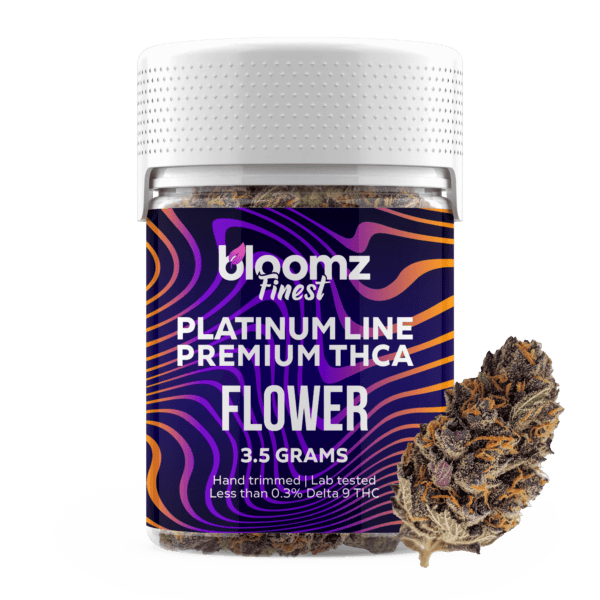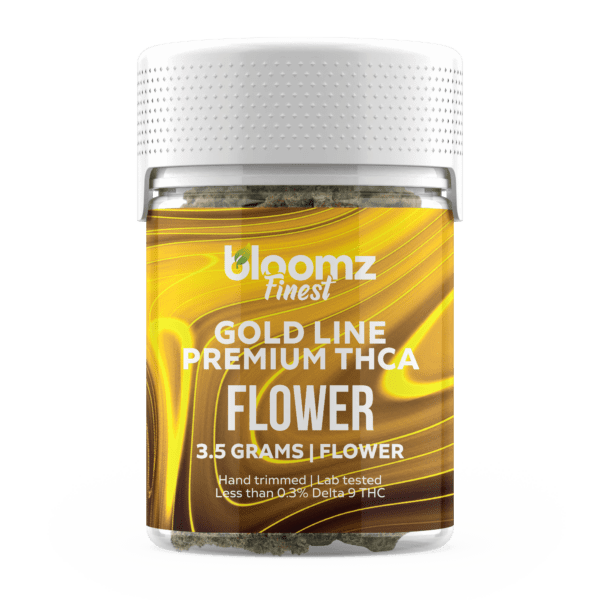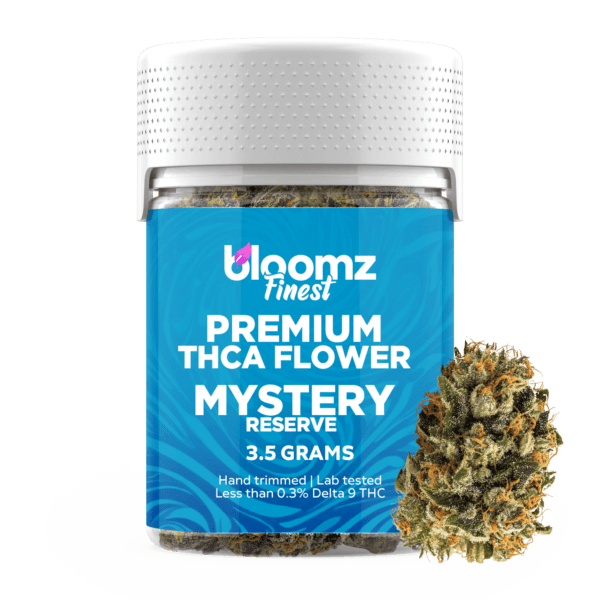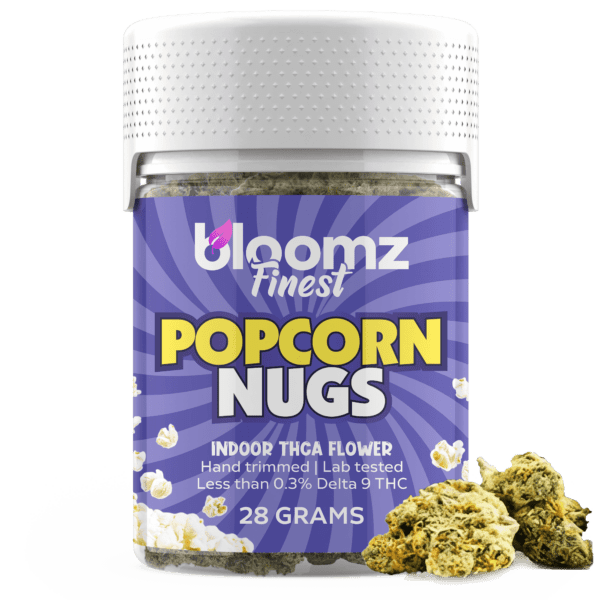In the grand, ever-evolving architecture of the cannabinoid world, where new and innovative structures are constantly being designed, a remarkable new material has emerged from the workshop of modern science. This novel compound is HHC, a cannabinoid prized for its unique stability and its intriguing effects, which has been used to create an entirely new class of products, most notably HHC flower. The construction of this new contender has naturally led to a fascinating and essential comparison with the timeless, foundational structure of the cannabis world: the magnificent, naturally occurring edifice of traditional weed.
This matchup is not merely a question of comparing two different buildings; it is a deeper exploration of two distinct architectural philosophies—the art of enhancing and fortifying a natural foundation versus the time-honored tradition of cultivating a masterpiece from the ground up, using nothing but the earth’s own perfect blueprints.
To Buy HHC Flower Click Here
Recommended products
Why It’s Important to Breakdown the Matchup of HHC Flower vs. Weed
Dissecting the comparison between HHC flower and traditional weed is more than just an academic exercise; it’s an essential task for any consumer looking to navigate the modern cannabinoid market with confidence and understanding. The legal space created by the 2018 Farm Bill has become a fertile ground for innovation, leading to the widespread availability of hemp-derived compounds like HHC.
However, the nature of these products, how they are made, and the experience they offer can be significantly different from traditional, state-legal cannabis. A thorough breakdown illuminates these crucial distinctions, empowering consumers to make informed choices that align with their personal preferences, legal circumstances, and desired outcomes:
-
Understanding the Core Structural and Experiential Differences: At the heart of this comparison are two distinct primary psychoactive compounds: HHC (Hexahydrocannabinol) and the Delta 9 THC found in dispensary products. HHC is a hydrogenated form of THC, a chemical modification that changes its stability and how it interacts with the body. A detailed breakdown explains why HHC is often described as providing a more uplifting and energizing euphoria, generally considered to be less potent than Delta 9 THC but more potent than Delta 8. This knowledge is crucial for consumers to accurately anticipate the character of the experience and select the compound that best fits their desired mood and intensity level.
-
Clarifying the Vastly Different Production Methods: It is absolutely critical for consumers to understand that “HHC flower” and “dispensary THC flower” are produced in entirely different ways. Dispensary THC flower is a natural agricultural product, cultivated to produce its cannabinoids and terpenes entirely on its own, with stringent regulatory oversight. In stark contrast, HHC flower is a manufactured product. It is built by taking a foundational material—legal hemp flower—and then applying a coat of HHC distillate that has been created semi-synthetically in a lab. Understanding this core difference between a singular, naturally grown product and a composite, infused product is essential for evaluating its quality, consistency, and the importance of verifying its purity.
-
Navigating a Complex and Shifting Legal Landscape: The legal regulations for these two products are vastly different and often confusing. Dispensary THC, despite state legality, remains a federally prohibited substance, with its legality determined on a state-by-state basis. HHC, as a hemp derivative, exists in a contentious legal gray area under federal law. While its proponents argue for its legality under the Farm Bill because it is not technically “THC,” its intoxicating nature has led many states to specifically ban it. A thorough breakdown is essential for consumers to understand the specific laws in their area, ensuring they can make purchases that are compliant and avoid the significant legal risks in a rapidly changing regulatory landscape.
-
Promoting Safe and Responsible Consumption Practices: Given that the HHC market operates under the broader and less consistently regulated framework of the federal hemp industry, consumer education is the primary tool for ensuring safety. A detailed comparison encourages users to act as their own quality inspectors by demanding and carefully scrutinizing comprehensive, third-party lab reports (COAs). By explaining what to look for—potency, residual solvents from the hydrogenation process, and other contaminants—this breakdown gives consumers the tools they need to vet products for safety and quality, fostering a safer and more transparent market for everyone.
-
Understanding Retail Environments and Consumer Protections: The distinction between purchasing HHC flower, often available online or in convenience stores, and Dispensary THC, exclusively sold through state-licensed dispensaries, is paramount. Licensed dispensaries offer regulated products, professional guidance, and a controlled environment, providing robust consumer protections regarding product safety, potency verification, and responsible sales practices. The HHC market, by contrast, often lacks this level of oversight, placing a greater burden of due diligence on the consumer to ensure product quality and safety.
Contender #1: HHC Flower
Making a resonant and harmonious debut from the meticulous recording studio of modern cannabinoid chemistry, HHC flower has carved out a significant and highly respected niche for itself in the national marketplace. To the eye, it appears entirely familiar, often presenting as beautiful, aromatic hemp buds that are visually appealing and rich in their own native terpenes. However, its true character and defining feature lie not in the raw plant material itself, but in the potent and uniquely stable cannabinoid with which it is expertly infused.
HHC flower is not a botanical specimen that can be found growing in a field; it is a carefully crafted, multi-component product that represents a perfect fusion of high-quality hemp cultivation and a sophisticated laboratory process known as hydrogenation. It stands as a powerful testament to the ingenuity of the hemp industry, which has learned to modify and enhance cannabinoids to create novel experiences. For many, it has become a popular and accessible alternative, offering a uniquely uplifting and functional euphoria that exists in the desirable middle ground between the gentle effects of Delta 8 and the powerful intensity of traditional dispensary THC.
To properly understand the flower, one must first be introduced to the remarkable cannabinoid that serves as its namesake: Hexahydrocannabinol (HHC) – a semi-synthetic cannabinoid that is a hydrogenated form of THC, meaning that, in a laboratory setting, hydrogen atoms are added to the THC molecule, breaking one of its double bonds. This process of hydrogenation is the same one used to turn vegetable oil into margarine, and it has a profound effect on the molecule’s structure.
By saturating the molecule with hydrogen, its structure becomes significantly more stable and less susceptible to degradation from oxidation and UV light. This molecular stability is HHC’s defining characteristic. The cannabinoid itself was first created in the 1940s by the famed American chemist Roger Adams. While trace amounts of HHC can be found naturally in the cannabis plant, the amounts are far too small to be commercially extracted. Therefore, the HHC used in consumer products is created in a lab by taking legally-hemp derived THC (or CBD that has first been converted to THC) and subjecting it to this precise hydrogenation process.
With this crucial scientific context, it becomes clear that “HHC flower” isn’t a strain of cannabis that a farmer can cultivate to be naturally rich in HHC but instead, it’s a manufactured, composite, and infused product. The process begins with high-quality, legally grown hemp flower, which is naturally rich in CBD (cannabidiol) and contains less than 0.3% Delta 9 THC. This beautiful, terpene-rich flower provides the physical structure, the aromatic compounds that create the flavor and smell, and a host of other minor cannabinoids.
This foundational hemp flower then serves as the base which is meticulously infused or coated with a pure HHC distillate, the potent, honey-like oil created through the hydrogenation process. This infusion process is what elevates the simple, non-intoxicating hemp flower into a potent, psychoactive product, delivering the unique and sought-after effects of HHC in a familiar, smokeable format. The quality and safety of the final product are therefore entirely dependent on two separate but equally important factors: the premium quality of the initial hemp flower and the verified purity of the HHC distillate with which it is infused.
Recommended products
The creation of a high-quality and effective HHC flower is a multi-stage process that requires a perfect marriage of expert agricultural practices and precise, high-level laboratory techniques. Each and every step in this complex chain of production is critically important to producing a final product that is safe, potent, consistent, and enjoyable for the end consumer:
-
Sourcing of Premium, High-Grade Hemp Flower: The foundation of any good HHC flower is, without question, the base flower itself. The most reputable and quality-conscious producers start with organically grown, premium-grade CBD or CBG hemp flower. This flower is cultivated not for its cannabinoid content alone, but for its superior physical and aromatic characteristics: a dense and aesthetically pleasing bud structure, a vibrant and rich color, a very high natural terpene content to ensure a robust flavor and aroma, and smooth, clean-burning properties that are essential for a pleasant smoking experience.
-
Creation of Pure HHC Distillate via Hydrogenation: In a completely separate, highly controlled, and sophisticated laboratory setting, the HHC itself is created. This process begins with a pure, hemp-derived THC concentrate. This THC is then placed in a specialized reactor with a catalyst (often a noble metal like palladium) and is subjected to high pressure with hydrogen gas. This hydrogenation process breaks a double bond in the THC molecule and adds hydrogen atoms, converting it into the more stable HHC. The resulting crude HHC oil must then be meticulously purified through multiple stages of distillation and refinement to remove the catalyst and any unreacted reagents, resulting in a pure, potent, and clean HHC distillate.
-
The Artful and Consistent Infusion Process: This is the key manufacturing step where the agricultural product (the flower) and the laboratory product (the distillate) are carefully combined into a single, cohesive item. There are several proprietary methods for this infusion. A common technique involves gently heating the thick HHC distillate to make it less viscous and then spraying it in a fine, even mist over the hemp buds as they are gently tumbled. More advanced methods may involve solventless cryo-infusion or vacuum infusion to ensure a deeper and more even penetration of the HHC into the flower material without oversaturating it.
-
Essential Curing and Thorough Quality Control: After the infusion process, the now-sticky and enhanced buds must be allowed to properly cure. This critical step ensures that the HHC distillate is evenly absorbed and that any excess moisture has evaporated, which is crucial for a smooth, even burn and the long-term stability of the product. During this phase, dedicated quality control teams will visually inspect the product for consistency and take numerous samples for in-house testing to ensure that the HHC potency is accurate and evenly distributed throughout the batch.
-
Final, Full-Panel Third-Party Laboratory Testing: As the final and most important step for ensuring consumer safety and transparency, representative samples from every finished batch of HHC flower are sent to an independent, accredited, third-party laboratory. This lab conducts a full-panel analysis, which is then published in a Certificate of Analysis (COA). The COA provides a detailed breakdown of the cannabinoid potency, verifying the HHC content and the legal compliance of the Delta 9 THC level, and crucially, it also screens for any harmful contaminants, including residual solvents, heavy metals, pesticides, and the catalyst used in hydrogenation, providing a final stamp of safety for the consumer.
The HHC flower market offers a robust variety of product types and formats, closely mirroring the traditional cannabis market to provide options for a wide range of consumer preferences. This selection allows individuals to choose a product that aligns with their budget, their desire for convenience, and their preferred method of consumption. While the core product is always a skillful combination of premium hemp flower and potent HHC distillate, these different forms below it takes can significantly shape the user experience:
-
Indoor HHC Flower: This category represents the top-shelf, connoisseur-grade offering in the HHC flower world. The process begins with exceptionally high-quality CBD or CBG hemp flower that has been cultivated indoors in a perfectly controlled and optimized environment. This meticulous cultivation results in a base flower that is dense, visually stunning with a thick coating of its own natural trichomes, and exceptionally rich in a complex profile of terpenes. When this premium-grade hemp is carefully and evenly infused with pure HHC distillate, it creates a final product that is celebrated for its superior, nuanced flavor, its remarkably smooth smoke, and its potent, well-rounded, and highly consistent effects.
-
Outdoor HHC Flower: To create a more accessible and budget-friendly option for a wider range of consumers, producers often utilize high-quality, sun-grown CBD or CBG hemp flower as the foundational material. While outdoor flower may have a slightly less manicured or “perfect” appearance and a more rustic, earthy terpene profile compared to its indoor-grown counterpart, it can still be incredibly flavorful and effective when cultivated with care. When infused with the same pure HHC distillate, it becomes a highly effective and enjoyable product that offers fantastic value for consumers who prioritize the final end effect over pristine aesthetic qualities.
-
HHC Small Buds: Often referred to simply as “smalls,” this product consists of the smaller, often popcorn-sized buds from a premium hemp harvest that have been infused with HHC. It is important to understand that these are not lower-quality buds in terms of their chemical makeup; they simply grew on the lower branches of the plant and did not get as large as the top colas. By infusing these small but still potent and terpene-rich hemp buds with HHC distillate, producers can offer a product that delivers the full flavor and potency of the premium nugs but at a more economical price point, making it a favorite among regular users.
-
HHC Moonrocks: These are a high-potency, artisan specialty product designed for those with a significant tolerance or for users seeking a particularly powerful and long-lasting experience. The creation of an HHC Moonrock is a triple-layered infusion process. It starts with a solid, premium hemp flower bud, which is then generously coated in a thick, sticky layer of highly potent HHC distillate. Before this powerful layer can dry, the entire gooey bud is thoroughly rolled in a powdery, blonde layer of pure CBD or CBG kief (the concentrated, sifted resin glands from the hemp plant). This creates a super-concentrated, dense, and slow-burning product that is incredibly potent and flavorful.
-
HHC Pre-Rolls, Blunts & Joints: Offering the ultimate in user convenience and ease of use, HHC pre-rolls are ready-to-smoke products that have been professionally filled and rolled with high-quality ground HHC-infused flower. They completely eliminate the need for any consumer preparation, such as owning a grinder, buying rolling papers, or possessing the skill to roll a proper joint. Available in a wide variety of strains and sizes and often packaged in single, portable, and odor-proof tubes, pre-rolls are the perfect, hassle-free, grab-and-go option for social settings, travel, or any time a simple, straightforward experience is desired.
When you see a familiar “strain” name, such as OG Kush or Sour Diesel, associated with an HHC flower product, it is fundamentally important to understand that this name is referring to the genetic strain of the base hemp flower that was used in its creation, before the infusion of the HHC distillate. The primary psychoactive and intoxicating effects will be driven by the infused HHC concentrate.
However, the more subtle, nuanced, and aromatic aspects of the overall experience—the specific flavor profile that greets the palate, the quality and character of the aroma that fills the air, and the gentle modulations in mood that form the undertones of the powerful experience—are all determined by the unique profile of aromatic terpenes that were naturally produced by the original CBD or CBG strain. The best producers carefully select foundational hemp strains that’re recognized to have robust, desirable, and potent terpene profiles in order to create a more sophisticated, flavorful, and enjoyable final product, using the familiar families of:
-
Indica: When an HHC Flower product is marketed under an Indica strain name, it signifies that the base hemp flower used in its creation was an Indica-dominant genetic variety, known for its relaxing and calming characteristics. These hemp strains are typically rich in a profile of terpenes like myrcene, linalool, and beta-caryophyllene, which are well known for producing earthy, musky, floral, and sometimes spicy aromas, and are often anecdotally associated with deeply calming and sedating sensations. The intended experience of an Indica-labeled HHC flower is a powerful synergy between the calming and soothing terpene profile from the flower and the pronounced physical relaxation provided by the HHC molecule itself, resulting in a product that is designed for deep, tranquil relaxation.
-
Sativa: An HHC flower product that is sold under a Sativa strain name has been crafted using a Sativa-dominant hemp variety as its base. These specific hemp strains are often very high in terpenes like terpinolene, limonene, and pinene, which are famous for contributing to bright, zesty, sweet, citrusy, and sharp piney aromas that many users find to be uplifting and energizing. The invigorating and fruity terpene profile of the Sativa flower is strategically combined with the uniquely euphoric and stimulating cerebral effects of HHC to create an experience that is intended to be incredibly uplifting, creativity-enhancing, and suited for high-energy pursuits or deep, focused artistic immersion.
-
Hybrid: Hybrid HHC flower products are created by utilizing a hybrid hemp strain as the foundational material, which by definition offers a balanced and often highly complex profile of terpenes derived from both its Indica and Sativa parentage. These strains are carefully chosen by producers for their well-rounded, multi-layered, and universally appealing aromas and flavors. The primary goal of a Hybrid HHC flower is to provide a versatile experience that delivers the powerful effects of HHC accompanied by a rich and satisfying terpene profile that is neither excessively sedating nor overly stimulating, making it a popular choice for experienced users who want the best of both worlds.
The legal status of HHC in the United States is exceptionally complex and exists in a state of profound legal ambiguity and flux. Its claim to legality is derived from the 2018 Farm Bill, which federally legalized hemp and its derivatives, so long as they contain less than 0.3% Delta 9 THC. Because HHC is not technically a “THC” molecule (it is a hexahydrocannabinol, not a tetrahydrocannabinol), and it is derived from hemp, its proponents argue that it is a federally legal hemp product that falls outside the scope of laws targeting THC isomers. However, this is a tenuous legal argument that is heavily contested.
The DEA has stated that synthetically-derived cannabinoids are illegal, and since HHC is created through a chemical process (hydrogenation), it is often considered semi-synthetic. Furthermore, its intoxicating nature has caused many states to take regulatory action to ban HHC either explicitly by name or by including it in broader bans on all intoxicating or synthetically derived cannabinoids, lumping it in with Delta 8 and THC-P. Therefore, while HHC may be available for purchase online, its legality is far from guaranteed and is subject to a chaotic and shifting patchwork of state laws and federal interpretations, making it a legally risky product to possess in many jurisdictions.
Recommended products
HHC flower is used by consumers for the purpose of achieving a unique and enjoyable psychoactive experience, one that is often sought for its balance of euphoria and functionality. The methods of consumption are identical to those used for traditional cannabis, relying on the application of heat to aerosolize the active compounds for inhalation or to prepare it for oral ingestion. The choice of consumption method below typically depends on the user’s preference for the speed of onset, the duration of the effects, and the overall character of the experience they are seeking:
-
Vaping (using a portable or desktop vaporizer): Vaping is widely considered to be an exceptional method for consuming HHC flower, primarily because it offers a cleaner, smoother, and significantly more flavorful experience than traditional smoking. A modern dry herb vaporizer is a sophisticated device specifically designed to heat the infused flower to a precise, user-controlled temperature. This temperature is hot enough to efficiently vaporize the HHC and the delicate, aromatic terpenes without actually causing the plant material to ignite and combust. This process creates a flavorful, cannabinoid-rich vapor that is generally considered to be less harsh on the lungs than hot, acrid smoke.
-
Smoking: This remains the most straightforward, traditional, iconic, and culturally resonant method of consumption. By smoking the HHC-infused flower in a rolled joint, a classic pipe, or a water pipe (often called a bong), the user applies intense, direct heat from a flame. This rapid heating process instantly and effectively vaporizes the HHC distillate for immediate inhalation deep into the lungs. The effects from smoking are typically felt within just a few minutes, which allows for very easy, intuitive, and real-time dose titration based on the user’s immediate feedback.
-
Cooking/Baking: HHC flower can certainly be used as the primary ingredient to create potent and long-lasting homemade edibles. Because HHC is already in its active form, it does not need to be decarboxylated like THCA. However, the base hemp flower is likely rich in the acidic cannabinoid CBDA. Therefore, if the user wishes to also gain the well-known benefits of activated CBD in their final edible product, they would still need to go through the decarboxylation process (gently baking the flower at a low temperature) to convert the CBDA into CBD. After this optional but recommended step, the fully activated flower can be infused into a fat like butter or coconut oil and then used in any number of culinary recipes.
The overall effects of HHC flower are what truly define its unique and highly appealing place in the modern cannabinoid market. The experience is driven by the HHC molecule, which is actually a mixture of two different enantiomers (mirror-image molecules) created during the hydrogenation process. One of these, 9R HHC, binds effectively to the CB1 receptors, while the other, 9S HHC, does not bind as well. The ratio of these two molecules can affect the overall potency of the final product. Generally, HHC is considered to be less potent than traditional Delta 9 THC, but more potent than Delta 8 THC, placing it in a desirable “sweet spot” for many users.
The character of the high is frequently described as being more Sativa-like, regardless of the base strain’s terpenes. Users often report a clear-headed, uplifting, and energizing euphoria, with less of the potential for the heavy, sedating body load that can sometimes accompany Delta 9 THC. This makes it a popular choice for daytime use, social gatherings, and creative pursuits, as it can provide a blissful and stimulating experience without significant cognitive impairment.
Pros & Cons
As with any novel, semi-synthetic cannabinoid product, HHC flower comes with a very distinct set of advantages and potential disadvantages. It is essential for any prospective consumer to carefully weigh these points, as they touch upon everything from its uniquely stable molecular structure and appealing effects to the significant and valid concerns surrounding its manufacturing process and its highly volatile and uncertain legal status in the United States.
Pros:
-
Enhanced Molecular Stability and Longer Shelf Life: The most unique and scientifically significant advantage of HHC is its superior molecular stability. The process of hydrogenation saturates the molecule, making it far less susceptible to degradation from oxidation and UV light. This means that HHC products, including HHC flower, have a much longer shelf life than THC products and are less likely to lose their potency over time when stored properly.
-
A Balanced and Uplifting Euphoric Experience: Many users report that HHC provides a uniquely pleasant and balanced psychoactive experience. It is often described as being more uplifting, energizing, and euphoric than Delta 8, yet less intense and anxiety-provoking than Delta 9 THC. This places it in a desirable middle ground, offering a blissful and functional “high” that many find perfect for social and creative activities.
-
Potency in a “Sweet Spot”: For a large segment of consumers, HHC’s potency level is a major advantage. It is generally considered to be stronger and more effective than Delta 8 THC, providing a more substantial and satisfying experience. However, it is also perceived as being gentler and more manageable than the sometimes-overwhelming power of high-THC traditional weed, making it an ideal compromise for intermediate users.
-
Quasi-Legal Accessibility in Certain Markets: As a hydrogenated hemp derivative that is not technically a “THC,” HHC has, in some jurisdictions, occupied a unique legal loophole. This has allowed it to be sold online and shipped to states where THC isomers like Delta 8 have been banned, providing a legal or quasi-legal avenue for adults in some restrictive areas to purchase an intoxicating cannabinoid product.
-
Less Intense Than Delta 9 THC: For individuals who are sensitive to the powerful effects of traditional weed or had uncomfortable experiences with it in the past, HHC offers a less intense alternative. The reduced potential for the anxiety, paranoia, or “couch-lock” that can sometimes be associated with Delta 9 THC is a significant benefit for many users, allowing for a more consistently positive and comfortable experience.
-
Convenience of Online Shopping and Home Delivery: The ability for consumers to purchase HHC flower online and have it shipped discreetly to their doorstep offers a level of convenience and privacy that the traditional, highly regulated dispensary model often cannot match. Customers can browse an enormous selection of products from a multitude of brands, compare prices, and read customer reviews, all from the comfort of their own home.
-
A Novel Cannabinoid for Experienced Users: For seasoned cannabis connoisseurs who have explored the full range of traditional THC experiences, HHC offers something new and different. Its unique Sativa-like character and distinct euphoric signature provide a novel and interesting profile of effects to explore, adding a new dimension to their understanding of cannabinoids.
-
Synergy with CBD and Terpenes: Because HHC flower is created by infusing a high-quality CBD or CBG hemp flower, the final product offers a synergistic blend of compounds. The consumer gets to experience the psychoactive properties of HHC alongside the rich and flavorful terpene profile and the non-intoxicating, balancing properties of the CBD and other minor cannabinoids present in the base flower, creating a well-rounded “entourage effect.”
-
A Functional, Less Sedating High: A frequently reported benefit of HHC is that its effects are less sedating and debilitating than high doses of Delta 9 THC. Many users find that they can remain active, engaged, and productive while still enjoying the euphoric and mood-lifting properties of the cannabinoid, making it a more functional choice for daytime use.
-
Showcases Scientific Innovation in the Hemp Industry: The development and popularization of HHC highlight the incredible scientific innovation that is occurring within the modern hemp industry. It demonstrates the ability of chemists and producers to isolate, understand, and modify cannabinoids to create new molecules with unique and desirable properties, pushing the boundaries of what is possible with the cannabis plant.
Cons:
-
A Highly Precarious and Uncertain Legal Status: Despite some clever legal arguments, the status of HHC is extremely precarious. As an intoxicating and semi-synthetic cannabinoid, many states have moved to ban it alongside Delta 8 and other hemp-derived psychoactive substances. The federal government’s stance is also unclear, creating a significant legal risk for consumers who purchase or possess HHC products.
-
Significant Concerns Regarding Safety and Purity: The national market for novel hemp-derived cannabinoids like HHC is significantly less regulated and scrutinized than the state-legal cannabis markets. The complex and multi-step chemical synthesis required to create HHC carries a risk of producing unwanted byproducts or leaving behind residual catalysts (like heavy metals) if the process is not performed and purified to the absolute highest standards.
-
A Profound Lack of Scientific and Clinical Research: HHC has been known to science for decades, but it has only been on the consumer market for a very short time. As a result, there is a profound lack of modern scientific and clinical research on its short-term and, more importantly, long-term effects on human health. Consumers are venturing into territory with a molecule whose full safety profile and long-term health implications are not yet understood.
-
An Infused and Manufactured, Not a Natural, Product: It is essential for consumers to remember that unlike traditional cannabis, HHC flower is not a product of nature alone; it is a multi-step, manufactured item. This infusion process can sometimes lead to an inconsistent product. An uneven spray of the sticky distillate can result in “hot spots” on the flower with a much higher concentration of HHC, leading to an unpredictable and potentially overwhelming experience.
Recommended products
-
Exotic THCA Pre-Rolls Gold Line – 3-Pack/6 Pack
$36.99$69.99 -
THC-P HashHole Pre-Rolls – Cookies
$19.99$24.99 -
THCA Pre-Rolls | Diamond Heights – Extrax
$17.99$23.99 -
THCA Pre-Rolls with THCA Diamonds – Cookies
$17.99$21.90
Contender #2: Weed
Stepping into the other corner of the ring is the undisputed, long-reigning heavyweight champion of the cannabis world: traditional weed. This is the plant that has been celebrated in song, featured in countless films, and woven into the fabric of human culture for millennia. Known by a multitude of names—marijuana, pot, ganja, cannabis—its identity is inextricably linked to its primary active compound, Delta 9 THC, and the classic euphoric experience it produces. It is the benchmark against which all other intoxicating cannabinoids are measured, the original icon whose reputation precedes it.
For generations, weed has been the centerpiece of social rituals, a tool for creative inspiration, and a symbol of counter-culture movements. Its journey from ancient spiritual practices to modern, state-licensed dispensaries is a testament to its enduring appeal and profound relationship with humanity. In this matchup, it represents the established, the well-understood, and the powerful legacy of cannabis itself.
At its most fundamental level, “weed” is a colloquial term for the flower of the female Cannabis sativa plant that contains a significant concentration of Delta-9-tetrahydrocannabinol (Delta 9 THC) – the primary intoxicating compound in cannabis. Unlike THCA flower, which is defined by its low Delta 9 THC and high THCA content, traditional weed is legally defined (at the federal level in the U.S.) as any cannabis that exceeds the 0.3% Delta 9 THC threshold. The plant produces cannabinoids like THCA and CBDA, but through the natural processes of drying, curing, and aging, as well as exposure to light and ambient heat, a portion of the THCA converts to Delta 9 THC.
In traditional weed, this conversion has occurred to a degree that the final product for sale already contains more than 0.3% Delta 9 THC, placing it outside the legal definition of hemp. When consumed, the remaining THCA is also converted to THC by heat, but it is this initial, pre-existing Delta 9 THC content that forms the basis of its legal classification as marijuana. The overall experience is driven by a complex interplay between a full spectrum of cannabinoids, terpenes, and flavonoids, with Delta 9 THC leading the charge.
The history of weed is a rich and sprawling saga that is deeply intertwined with the history of human civilization itself, spanning continents, cultures, and millennia. Archaeological evidence suggests its use dates back to at least 10,000 BCE in Asia, where it was cultivated for its durable fiber (hemp) to make rope, clothing, and paper, as well as for its seeds as a source of food. Its psychoactive properties were also recognized early on; ancient Chinese texts, such as the pharmacopeia attributed to Emperor Shen Nung around 2737 BCE, mention cannabis as a substance for spiritual and ceremonial purposes.
From China, its use spread across Asia to India, where it became ingrained in religious rituals, particularly within Hinduism, celebrated as one of the five sacred plants. It then traveled along trade routes to the Middle East, Africa, and eventually Europe. It was introduced to the Americas by the Spanish in the 16th century. For centuries, it was widely used for industrial and wellness applications globally. The turning point towards prohibition in the United States began in the early 20th century, fueled by political and racial factors, culminating in the “Reefer Madness” propaganda era and the Marihuana Tax Act of 1937, which effectively criminalized the plant.
This was solidified by the Controlled Substances Act of 1970, which classified marijuana as a Schedule I drug. However, a counter-movement began to bubble up, and in 1996, California became the first state to legalize medical marijuana, setting off a wave of reform that continues to this day, with an increasing number of states legalizing it for recreational adult use.
The modern weed market is a vibrant and innovative space, offering a diverse portfolio of product types that cater to every imaginable preference and lifestyle. This evolution has moved far beyond simply selling dried flower, transforming the plant into a wide range of consumable goods that provide different experiences, potencies, and methods of delivery. From traditional smokeable options to precisely dosed edibles and highly concentrated extracts, this variety allows consumers to engage with cannabis in ways that best suit their comfort level, desired effects, and social setting.
This expansion of product categories has not only made cannabis more accessible to a broader audience but has also allowed for a more refined and customized user experience:
-
Flower: This is the most classic and traditional form of cannabis consumption. Flower refers to the dried, cured buds of the marijuana plant, which are sold loose in various weights (e.g., grams, eighths, ounces). Consumers can then use this loose flower to pack into bowls, pipes, or bongs, or they can grind it up and roll it themselves. For convenience, many dispensaries also offer pre-rolls and joints, which are pre-packaged, ready-to-smoke options that eliminate the need for any preparation. Consuming flower allows the user to experience the full, unaltered profile of a particular strain, including its unique aroma and flavor derived from its terpenes. The effects of smoking or vaping flower are felt almost immediately, making it easy to control the experience.
-
Edibles: Edibles are food and beverage products that have been infused with cannabis extracts. This category has exploded in popularity due to its discretion, ease of use, and the fact that it doesn’t require any inhalation. The variety is nearly endless, with gummies and candies being particularly popular for their precise dosing and long shelf life. Classic baked goods like brownies and cookies remain a staple, while the market has also expanded to include everything from infused chocolates and beverages to savory snacks and cooking oils. When consumed, the THC is processed by the liver, converting it to a more potent form called 11-hydroxy-THC. This results in a much more powerful and longer-lasting full-body experience compared to smoking, though the onset of effects is delayed, typically taking 30 minutes to 2 hours.
-
Pre-Filled Vape Cartridges: Vaping has become a preferred method for many due to its convenience, discretion, and perceived health benefits over smoking. Pre-filled vape cartridges, often called “carts,” are small, disposable containers filled with cannabis oil concentrate. These cartridges attach to a reusable battery (a “vape pen”) that heats the oil, creating a vapor that is inhaled. This method offers a potent, fast-acting experience similar to smoking but without the harshness or strong odor of burning plant material. Carts are available in a wide variety of strains and potencies, and their sleek, portable design makes them ideal for on-the-go use.
-
Concentrates: Also known as extracts or dabs, concentrates are highly potent products created by extracting the most desirable compounds—cannabinoids and terpenes—from the cannabis plant, leaving behind the excess plant material. This results in substances with extremely high THC levels, often ranging from 60% to over 90%. Concentrates come in many different textures and forms, including wax, shatter, budder, live resin, and rosin. They are typically consumed using a specialized device called a “dab rig” or a portable dab pen, which flash-vaporizes a small amount of the concentrate for inhalation. Dabbing provides a very powerful and immediate experience, and it is generally recommended for experienced users due to its high potency.
The legal status of traditional weed in the United States is a complex and fragmented issue, defined by a stark conflict between federal and state law. At the federal level, marijuana remains a Schedule I controlled substance under the Controlled Substances Act, placing it in the same category as heroin and LSD, which deems it to have a high potential for abuse and no currently accepted medical use. This federal prohibition means that any cultivation, sale, or possession of marijuana is technically illegal under federal law.
However, a significant and growing number of individual states have passed their own legislation in direct defiance of this federal stance. This has created a patchwork of legality across the country: some states have fully legalized marijuana for both recreational and medical use for adults over 21, some states permit it only for medical purposes with a doctor’s recommendation, a few have “decriminalized” small amounts (making it a civil infraction rather than a criminal offense), and others still maintain a complete prohibition. This federal-state conflict creates numerous challenges, particularly in areas like banking, interstate commerce, and taxation for cannabis businesses operating legally under state law.
The overall effects of consuming weed are primarily driven by its main psychoactive component, Delta 9 THC, interacting with the body’s endocannabinoid system. When THC enters the bloodstream and travels to the brain, it binds to cannabinoid receptors (primarily CB1 receptors), which in turn influences the release of neurotransmitters. This interaction produces the hallmark “high” associated with marijuana, a multifaceted experience that can vary significantly based on the strain, dosage, consumption method, and the individual’s unique physiology and mindset.
Generally, users can expect a sense of euphoria and an uplifted mood, often accompanied by laughter and a feeling of well-being. It can also alter sensory perception, making music sound richer, food taste more delicious, and colors appear more vibrant. Many people experience a profound state of relaxation and a “chilled out” disposition, while others might find it sparks creativity and new patterns of thought. The experience is deeply personal and can range from invigorating and social to calm and introspective.
Pros & Cons
Traditional weed comes with a well-established set of pros and cons, shaped by its long history, natural origins, and its complicated legal standing. Its advantages are rooted in its authenticity, the robust regulations of legal markets, and its cultural significance, while its drawbacks are largely tied to its potent effects and its ongoing federal illegality.
Pros:
-
A Natural, Plant-Based Product: Traditional weed is a product of natural cultivation. The cannabinoids and terpenes are produced within the plant’s own trichomes, not added or synthesized in a lab. For many consumers, this natural origin is a significant advantage, as they prefer to consume a product that is as close to its natural state as possible.
-
Strictly Regulated and Tested in Legal States: In states with legal cannabis markets, all products must undergo mandatory, comprehensive third-party lab testing. This rigorous seed-to-sale oversight ensures that products are free from harmful contaminants like pesticides, heavy metals, and mold, and that the potency is accurately labeled, providing a very high level of safety and quality assurance.
-
Potent and Powerful Effects: For experienced users or those seeking a powerful and profound experience, the high potency of modern weed is a major benefit. The strong psychoactive effects of Delta 9 THC can produce a deep sense of euphoria and bliss that is more intense than what is typically experienced with other cannabinoids like Delta 8.
-
Incredible Product Variety in Dispensaries: The legal weed market is incredibly innovative, offering a far greater variety of product types than the hemp market. Consumers in legal states can choose from a massive selection of flower, edibles, tinctures, topicals, beverages, and a dazzling array of complex concentrates, ensuring there is a product for every preference.
-
A Rich and Well-Understood Genetic History: Weed has been cultivated for centuries, resulting in thousands of well-known and stable genetic strains. Iconic Indica, Sativa, and Hybrid strains have predictable and well-documented effects, allowing consumers to reliably choose a product that will deliver the specific type of experience they are looking for.
-
In-Person Professional Guidance: The dispensary model provides consumers with access to knowledgeable budtenders. These trained professionals can offer personalized recommendations, answer questions about different products and consumption methods, and help guide users to a safe and enjoyable experience, which is an invaluable resource, especially for newcomers.
-
Deep Cultural Significance and Familiarity: Weed has a long and storied history in human culture, art, and society. This deep cultural penetration means that its effects and use are widely understood and familiar. This shared context can make it a more approachable and less intimidating product for many people compared to newer, more scientifically-named cannabinoids.
-
Driving Economic Growth and Tax Revenue: The legalization of weed has created a booming industry that generates thousands of jobs and stimulates local economies. The substantial taxes levied on cannabis sales also create a significant new revenue stream for states, which can be used to fund important public services like education and infrastructure.
Cons:
-
Federal Illegality: The most significant drawback is that weed remains illegal under federal law. This creates numerous legal and logistical challenges, from banking and tax issues for businesses to potential consequences for consumers regarding federal employment, housing, or international travel.
-
Potency Can Be Overwhelming: The high potency of modern weed, while a pro for some, can be a major con for others. For inexperienced users or those with a low tolerance, the intense effects of Delta 9 THC can be overwhelming and may lead to an unpleasant experience characterized by feelings of anxiety or paranoia.
-
Limited Legal Access: Access to legal, tested weed is entirely dependent on your location. If you do not live in or near one of the states that have legalized it, you have no legal way to purchase it. This creates major geographic disparities in access to safe and regulated products.
-
Higher Cost: Due to heavy state and local taxes and the high cost of regulatory compliance, products from a legal dispensary are often significantly more expensive than products from the hemp-derived or illicit markets. This high cost can be a barrier for some consumers.
-
Persistent Social Stigma: Despite growing acceptance, a social stigma against weed use can still exist in many communities and professional environments. Many employers, even in legal states, still test for THC as a condition of employment, which can have serious consequences for an individual’s career.
How to Go About Choosing Which Option
Embarking on the journey to choose between HHC flower and traditional weed requires a thoughtful and honest evaluation of your personal preferences, your experience level with psychoactive substances, and the specific legal landscape of your location. This is not a simple contest to determine a single “winner,” but rather a nuanced and personal decision to find the product that is the right and responsible fit for you. These two compelling contenders represent different points on the potency spectrum and are born from entirely different processes—one from the innovative world of laboratory chemistry, the other from millennia of agricultural tradition. By carefully considering the character of the experience you are seeking, your comfort with a manufactured versus a natural product, and the specific laws that govern your area, you can make a confident, safe, and well-informed choice.
The first and most important consideration in this process should be the type of experience you desire. Are you seeking a powerful, profound, and intensely euphoric high, an experience that has the potential to be deeply introspective and transformative? If so, the high concentration of the potent Delta 9 THC in traditional weed is likely the better choice to meet those expectations. However, if you are looking for a more moderate, functional, and uplifting experience—something that provides a clear-headed and energizing euphoria without the potential for the heavy sedation or anxiety that can sometimes accompany Delta 9 THC—then the unique effects of HHC flower could be an ideal fit. It offers a way to enjoy a blissful and stimulating experience that many find to be a perfect middle ground.
Next, you should reflect on the nature of the products themselves and which aligns better with your personal values and comfort level. Do you have a strong preference for a natural, plant-based product that is consumed as it was grown? If so, traditional weed flower, which is simply the cultivated, dried, and cured bud of the cannabis plant, aligns with this value. On the other hand, if you are comfortable with and interested in products created through modern scientific processes, then the manufactured nature of HHC flower—a hemp flower that has been scientifically infused with a hydrogenated cannabinoid—will not be a concern. This choice often comes down to a personal philosophical preference for either natural simplicity or technological innovation.
Finally, and most practically, you must assess your legal situation. Do you live in a state with a legal, adult-use cannabis market? If yes, you have the luxury of choosing between both products, and your choice can be based on your desired effects. However, if you live in a state where weed is illegal, you must then investigate the specific laws regarding HHC. While it may be a legal option for you in a state that has banned Delta 8, it is crucial to confirm this, as many states have enacted broad bans on all intoxicating hemp derivatives. Your location and its specific laws will ultimately be the most significant factor in determining which products are legally accessible to you.
|
Feature |
HHC Flower |
Traditional Weed |
|---|---|---|
|
Primary Psychoactive Compound |
HHC (Hexahydrocannabinol) – Infused |
Delta 9 THC – Naturally Occurring |
|
Nature of Product |
A manufactured product (hemp flower + HHC distillate) |
A natural, cultivated plant flower |
|
Relative Potency |
Moderate to High (Less than Delta 9, More than Delta 8) |
High (The standard potency benchmark) |
|
Typical User Experience |
Uplifting, euphoric, and clear-headed; often Sativa-like |
Potent, intense, and diverse high with nuanced effects |
|
Key Differentiator |
Highly stable molecule with a long shelf life |
Holistic “entourage effect” from a full spectrum of natural compounds |
|
Method of Creation |
Cannabinoids are hydrogenated and then infused onto flower |
Cannabinoids are naturally produced by the plant during cultivation |
|
Federal Legal Status |
Legally ambiguous/precarious; often contested and banned by states |
Federally illegal (Schedule I Controlled Substance) |
|
System of Regulation |
Less regulated federal market; quality and safety varies greatly by brand |
Heavily regulated by state agencies with mandatory seed-to-sale testing |
|
Primary Advantage |
Unique, functional high; excellent shelf stability |
Natural origin, holistic effects, and robust safety testing in legal markets |
|
Primary Disadvantage |
Uncertain legality and safety; lack of long-term research |
Federal illegality; can be too intense for some; limited geographic access |
The Fortified Structure and the Natural Landmark: A Choice of Design
In the final analysis, the compelling matchup between HHC Flower and traditional weed serves as a vivid illustration of the incredible diversity and the scientific innovation that now define the modern cannabis landscape. It is a fundamental choice between the time-honored beauty and holistic complexity of a natural landmark, and the engineered stability and unique design of a modern, fortified structure. There is no single champion in this contest, only a personal preference, a choice that must be a true and honest reflection of the experience you seek and the values you hold.
By arming yourself with a deep and sober understanding of their profound differences in effects, creation, and legality, you can confidently and responsibly navigate your options and choose the architectural marvel—be it the one grown from the earth or the one perfected in the lab—that is perfectly and safely designed for you.
To Buy HHC Flower Click Here
Recommended products
-
THCA Flower – Platinum Line
$49.99$79.99 -
THCA Flower – Indoor Exotics – Gold Line
$37.99$69.99 -
THCA Flower – Mystery Reserve
$41.99$79.99 -
THCA Smalls
$149.99$256.99

